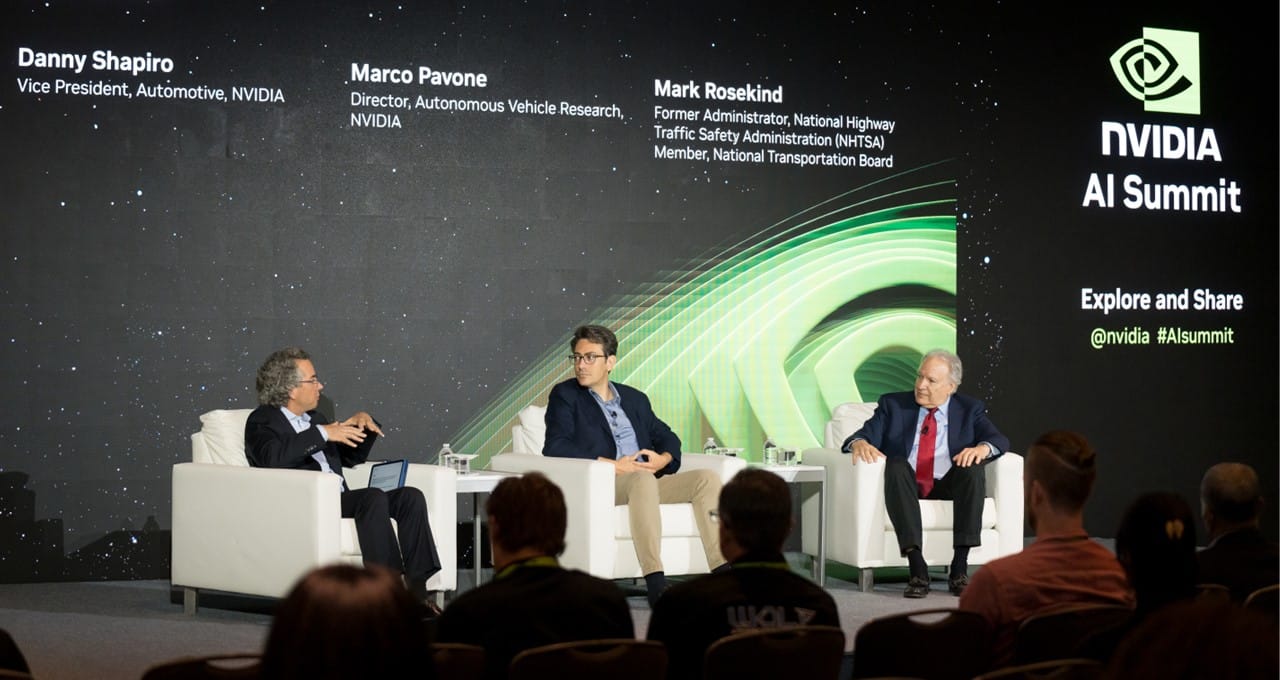Navigating the Future of Autonomous Vehicles: Insights from the NVIDIA AI Summit
The landscape of autonomous vehicle (AV) technology is rapidly evolving, driven by significant technological advancements and the crucial need for standardized guidelines. These guidelines are essential to ensure the safety of both autonomous vehicles and their interaction with human-driven vehicles. This topic took center stage at the NVIDIA AI Summit held in Washington, D.C., where industry leaders gathered to discuss the future of AV safety from both regulatory and technological perspectives.
A Call for Enhanced Road Safety
Kicking off the summit, Danny Shapiro, Vice President of Automotive at NVIDIA, emphasized the urgency of improving road safety. He highlighted the alarming statistics of crashes, injuries, and fatalities that occur on roads globally, primarily due to human error. This introduction set the tone for the discussions that followed, underscoring NVIDIA’s long-standing commitment to enhancing road safety through the development of advanced driver assistance systems and fully autonomous driving technologies.
NVIDIA’s Approach to Autonomous Vehicle Development
NVIDIA’s strategy in developing autonomous vehicles revolves around the integration of three core computing systems. These systems play distinct yet complementary roles:
- AI Training Computer: This system is responsible for training the artificial intelligence that powers autonomous vehicles, enabling them to learn and adapt to various driving scenarios.
- Simulation Computer: This computer is used to test and validate the AI in a controlled environment. By simulating real-world conditions, developers can ensure the AI’s reliability and safety before actual deployment.
- In-Vehicle Processing Computer: Once the AI is trained and validated, this computer processes sensor data in real-time within the vehicle, making crucial driving decisions to ensure safety.
Together, these systems facilitate an ongoing cycle of development and improvement, enhancing both the performance and safety of autonomous vehicle software.
The Regulatory Landscape
Mark Rosekind, a former administrator of the National Highway Traffic Safety Administration and a respected figure in automotive safety, provided insights into the complex regulatory environment surrounding autonomous vehicles. He explained that while federal agencies primarily focus on vehicle regulations, individual states are responsible for regulating operators. This includes aspects such as driver education, insurance, and licensing. The fragmented nature of these regulations poses challenges for the uniform adoption and deployment of autonomous vehicles across the United States.
Technological Innovations in AV Development
Marco Pavone, Director of AV Research at NVIDIA, shared exciting developments in the field of AV technology. He discussed how emerging tools, fueled by advancements in generative AI and neural rendering, are transforming the way autonomous vehicles are developed. These technologies are paving the way for sophisticated simulations that can generate complex scenarios to rigorously test vehicle safety. Additionally, they empower developers to use foundation models, such as vision language models, to create more robust autonomous driving software.
The Role of Simulation in Safety Assurance
One of the key discussions during the panel was an announcement by MITRE, a government-sponsored nonprofit research organization. MITRE revealed its partnership with Mcity at the University of Michigan to create a comprehensive AV validation platform. This platform will combine virtual and physical testing environments to facilitate the safe deployment of autonomous vehicles.
MITRE plans to leverage Mcity’s simulation tools and a digital twin of its test facility, integrating these with NVIDIA’s Omniverse Cloud Sensor RTX applications programming interfaces. This collaboration aims to provide a physically accurate sensor simulation environment within a digital proving ground, allowing developers to conduct extensive testing and validation of AVs in a controlled, simulated world before real-world deployment.
Expert Opinions on Simulation
Reflecting on MITRE’s announcement, Rosekind praised the initiative as a valuable opportunity to establish a trustworthy and neutral platform for testing AV safety. Given MITRE’s extensive experience in safety assurance within the aviation sector, this new platform promises to bring a similar level of rigor to the autonomous vehicle industry.
Pavone highlighted the pivotal role of simulation in this endeavor. He noted that simulation enables the testing of dangerous conditions in a controlled, repeatable manner, allowing developers to explore a wide range of scenarios at scale. Shapiro echoed these sentiments, emphasizing the controllability and repeatability of simulations. Developers can manipulate variables such as weather, time of day, and potential hazards to fine-tune AV software continuously.
A Shared Vision for Safer Roads
The panel concluded with a shared vision for the future of autonomous driving—reducing fatalities and injuries on roadways. This goal unites businesses, regulators, and researchers in their efforts to advance autonomous vehicle technology and ensure its safe integration into everyday life.
For those interested in delving deeper into the discussions from the summit, a replay of the session is available online. Additionally, NVIDIA’s Self-Driving Safety Report provides further insights into the company’s commitment to road safety and the advancements being made in the field of autonomous driving technology.
As the autonomous vehicle industry continues to evolve, the collaboration between technology developers, regulatory bodies, and research organizations remains crucial. Together, they are paving the way for a safer, more efficient future on our roads, where autonomous vehicles can coexist seamlessly with human-driven vehicles, enhancing safety for all.
For more Information, Refer to this article.


































